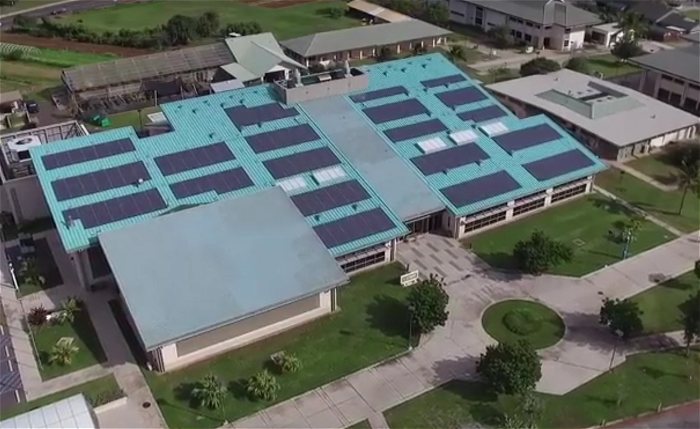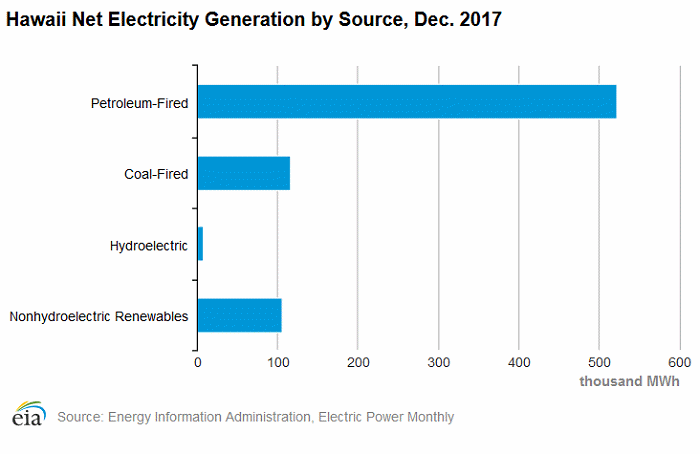
Image: University Of Hawai’i
The University of Hawai’i says its Maui College campus will be among the first in the USA to source 100 percent of its energy from on-site solar power systems paired with battery storage – with other UH campuses to follow.
By early next year, 2.8 MW of solar PV and 13.2 MWh of battery storage will be installed at Maui College, along with 7.7 MW of solar power capacity and 28.6 MWh of distributed energy storage spread among four UH Community Colleges O’ahu campuses (Leeward, Honolulu, Kapi’olani and Windward).
The University of Hawaiʻi system includes 3 universities, 7 community colleges and community-based learning centers throughout the state.
Coupled with energy-efficiency measures, post-rollout the five UH campuses will collectively reduce UH’s fossil fuel based electricity consumption by ~14 GWh annually (45 percent). Maui College’s consumption will be reduced 100%, Leeward 98%, Honolulu 97%, Kapi’olani 74% and Windward 70%.
“We are proud to move the entire University of Hawai’i System closer to its net-zero energy mandate, to celebrate UH Maui College’s achievement and to position the O’ahu community college campuses within reach of 100 percent renewable energy generation,” said UH Vice President for Community Colleges John Morton.
As well as reducing energy related emissions and costs, the upgrades will provide additional learning and research opportunities for staff and students.
UH and the Hawai’i Legislature have previously established a goal for the university system to be net-zero by the beginning of 2035.
Hawai’i’s Energy Mix Changing Rapidly
Like many other island communities, states and nations, Hawai’i has traditionally relied heavily on fossil fuels for electricity generation.

Hawaii’s electricity is not only emissions intensive, but in 2016, the state had the highest electricity prices in the nation.
In 2015, Hawai’i was first U.S. state to set a legally-binding target of sourcing 100% of its electricity from renewable energy sources, which is to be achieved by 2045.
Solar energy is already making its presence felt in the state – according to the Energy Information Administration, in 2016 Hawai’i generated more solar electricity per capita from distributed installations than any other state.
With Hawai’i’s university system being a significant consumer of electricity, its solar energy efforts will play an important role in the state reaching its 100% goal.
Here in Australia, a number of universities are also harvesting the energy of the sun to slash emissions and energy costs (or are soon to do so). The institutions include University Of New England, University of Newcastle, UNSW, Monash, Charles Sturt, University of Southern Queensland and University of Queensland.

 RSS - Posts
RSS - Posts



Speak Your Mind